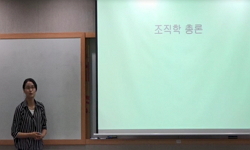Background: Tendon degeneration contributes to rotator cuff tears; however, its role in postoperative structural integrity is poorly understood. The purpose of this study was to investigate the factors associated with postoperative structural integrit...
http://chineseinput.net/에서 pinyin(병음)방식으로 중국어를 변환할 수 있습니다.
변환된 중국어를 복사하여 사용하시면 됩니다.
- 中文 을 입력하시려면 zhongwen을 입력하시고 space를누르시면됩니다.
- 北京 을 입력하시려면 beijing을 입력하시고 space를 누르시면 됩니다.

Prognostic factors affecting structural integrity after arthroscopic rotator cuff repair: a clinical and histological study
한글로보기https://www.riss.kr/link?id=A108488570
-
저자
Pei Wei Wang (Department of Orthopedic Surgery, SMG-SNU Boramae Medical Center, Seoul National University College of Medicine, Seoul, Korea) ; Chris Hyunchul Jo (Department of Orthopedic Surgery, SMG-SNU Boramae Medical Center, Seoul National University College of Medicine, Seoul, Korea)
- 발행기관
- 학술지명
- 권호사항
-
발행연도
2023
-
작성언어
English
- 주제어
-
등재정보
KCI등재
-
자료형태
학술저널
- 발행기관 URL
-
수록면
10-19(10쪽)
- DOI식별코드
- 제공처
-
0
상세조회 -
0
다운로드
부가정보
다국어 초록 (Multilingual Abstract)
Background: Tendon degeneration contributes to rotator cuff tears; however, its role in postoperative structural integrity is poorly understood. The purpose of this study was to investigate the factors associated with postoperative structural integrity after rotator cuff repair, particularly focusing on the histology of tendons harvested intraoperatively. Methods: A total of 56 patients who underwent primary arthroscopic rotator cuff repair between 2009 and 2011 were analyzed. A 3-mm-diameter sample of supraspinatus tendons was harvested en bloc from each patient after minimal debridement of the torn ends. Tendon degeneration was assessed using seven histological parameters on a semi-quantitative grading scale, and the total degeneration score was calculated. One-year postoperative magnetic resonance imaging was used to classify the patients based on retear. Results: The total degeneration scores in the healed and retear groups were 13.93±2.03 and 14.08±2.23 (p=0.960), respectively. Arthroscopically measured anteroposterior (AP) tear sizes in the healed and retear groups were 24.30±12.35 mm and 36.42±25.23 mm (p=0.026), respectively. Preoperative visual analog scale pain scores at rest in the healed and retear groups were 3.54±2.37 and 5.16±2.16 (p=0.046), respectively. Retraction sizes in the healed and retear groups were 16.02±7.587 mm and 22.33±13.364 mm (p=0.037), respectively. The odds of retear rose by 4.2% for every 1-mm increase in AP tear size (p=0.032). Conclusions: The postoperative structural integrity of the rotator cuff tendon was not affected by tendon degeneration, whereas the arthroscopically measured AP tear size of the rotator cuff tendon was an independent predictor of retear.
참고문헌 (Reference)
1 Duquin TR, "Which method of rotator cuff repair leads to the highest rate of structural healing? A systematic review" 38 : 835-841, 2010
2 Galatz LM, "The outcome and repair integrity of completely arthroscopically repaired large and massive rotator cuff tears" 86 : 219-224, 2004
3 Cho NS, "The factors affecting the clinical outcome and integrity of arthroscopically repaired rotator cuff tears of the shoulder" 1 : 96-104, 2009
4 Jo CH, "The effect of multiple channeling on the structural integrity of repaired rotator cuff" 19 : 2098-2107, 2011
5 Maffulli N, "Similar histopathological picture in males with Achilles and patellar tendinopathy" 36 : 1470-1475, 2004
6 Tallon C, "Ruptured Achilles tendons are significantly more degenerated than tendinopathic tendons" 33 : 1983-1990, 2001
7 Keener JD, "Revision arthroscopic rotator cuff repair : repair integrity and clinical outcome" 92 : 590-598, 2010
8 Meyer DC, "Retraction of supraspinatus muscle and tendon as predictors of success of rotator cuff repair" 40 : 2242-2247, 2012
9 Nho SJ, "Prospective analysis of arthroscopic rotator cuff repair : prognostic factors affecting clinical and ultrasound outcome" 18 : 13-20, 2009
10 Jo CH, "Platelet-rich plasma for arthroscopic repair of large to massive rotator cuff tears : a randomized, single-blind, parallel-group trial" 41 : 2240-2248, 2013
1 Duquin TR, "Which method of rotator cuff repair leads to the highest rate of structural healing? A systematic review" 38 : 835-841, 2010
2 Galatz LM, "The outcome and repair integrity of completely arthroscopically repaired large and massive rotator cuff tears" 86 : 219-224, 2004
3 Cho NS, "The factors affecting the clinical outcome and integrity of arthroscopically repaired rotator cuff tears of the shoulder" 1 : 96-104, 2009
4 Jo CH, "The effect of multiple channeling on the structural integrity of repaired rotator cuff" 19 : 2098-2107, 2011
5 Maffulli N, "Similar histopathological picture in males with Achilles and patellar tendinopathy" 36 : 1470-1475, 2004
6 Tallon C, "Ruptured Achilles tendons are significantly more degenerated than tendinopathic tendons" 33 : 1983-1990, 2001
7 Keener JD, "Revision arthroscopic rotator cuff repair : repair integrity and clinical outcome" 92 : 590-598, 2010
8 Meyer DC, "Retraction of supraspinatus muscle and tendon as predictors of success of rotator cuff repair" 40 : 2242-2247, 2012
9 Nho SJ, "Prospective analysis of arthroscopic rotator cuff repair : prognostic factors affecting clinical and ultrasound outcome" 18 : 13-20, 2009
10 Jo CH, "Platelet-rich plasma for arthroscopic repair of large to massive rotator cuff tears : a randomized, single-blind, parallel-group trial" 41 : 2240-2248, 2013
11 Matthews TJ, "Pathology of the torn rotator cuff tendon : reduction in potential for repair as tear size increases" 88 : 489-495, 2006
12 Jo CH, "Optimal configuration of arthroscopic sliding knots backed up with multiple half-hitches" 16 : 787-793, 2008
13 Colvin AC, "National trends in rotator cuff repair" 94 : 227-233, 2012
14 Maffulli N, "Light microscopic histology of achilles tendon ruptures : a comparison with unruptured tendons" 28 : 857-863, 2000
15 Longo UG, "Histopathology of the supraspinatus tendon in rotator cuff tears" 36 : 533-538, 2008
16 Sugaya H, "Functional and structural outcome after arthroscopic full-thickness rotator cuff repair : single-row versus dual-row fixation" 21 : 1307-1316, 2005
17 Fuchs B, "Fatty degeneration of the muscles of the rotator cuff : assessment by computed tomography versus magnetic resonance imaging" 8 : 599-605, 1999
18 Jeong HY, "Factors predictive of healing in large rotator cuff tears : is it possible to predict retear preoperatively" 46 : 1693-1700, 2018
19 Le BT, "Factors predicting rotator cuff retears : an analysis of 1000 consecutive rotator cuff repairs" 42 : 1134-1142, 2014
20 Jo CH, "Factors associated with degeneration of rotator cuff tendon : a histological study in patients with rotator cuff tear" 85 : 393-399, 2019
21 Choi S, "Factors associated with clinical and structural outcomes after arthroscopic rotator cuff repair with a suture bridge technique in medium, large, and massive tears" 23 : 1675-1681, 2014
22 Jo CH, "Degree of tendon degeneration and stage of rotator cuff disease" 25 : 2100-2108, 2017
23 조현철 ; 장미수, "Degeneration Exists along the Entire Length of the Supraspinatus Tendon in Patients with a Rotator Cuff Tear" 대한견주관절학회 18 (18): 61-67, 2015
24 Bishop J, "Cuff integrity after arthroscopic versus open rotator cuff repair : a prospective study" 15 : 290-299, 2006
25 Longo UG, "Characteristics at haematoxylin and eosin staining of ruptures of the long head of the biceps tendon" 43 : 603-607, 2009
26 Kovacevic D, "Biological augmentation of rotator cuff tendon repair" 466 : 622-633, 2008
27 Thomazeau H, "Atrophy of the supraspinatus belly : assessment by MRI in 55 patients with rotator cuff pathology" 67 : 264-268, 1996
28 Boileau P, "Arthroscopic repair of full-thickness tears of the supraspinatus : does the tendon really heal" 87 : 1229-1240, 2005
29 Kinsella K, "An ageing world"
30 Cook JL, "Abnormal tenocyte morphology is more prevalent than collagen disruption in asymptomatic athletes' patellar tendons" 22 : 334-338, 2004
동일학술지(권/호) 다른 논문
-
- 대한견주관절학회
- Serge Sultanem
- 2023
- KCI등재
-
- 대한견주관절학회
- Alex E. White
- 2023
- KCI등재
-
Implant selection for successful reverse total shoulder arthroplasty
- 대한견주관절학회
- Joo Han Oh
- 2023
- KCI등재
-
The Net Promoter Score with Friends and Family Test applied to arthroscopic shoulder surgery
- 대한견주관절학회
- Jabbal Monu
- 2023
- KCI등재




 DBpia
DBpia






